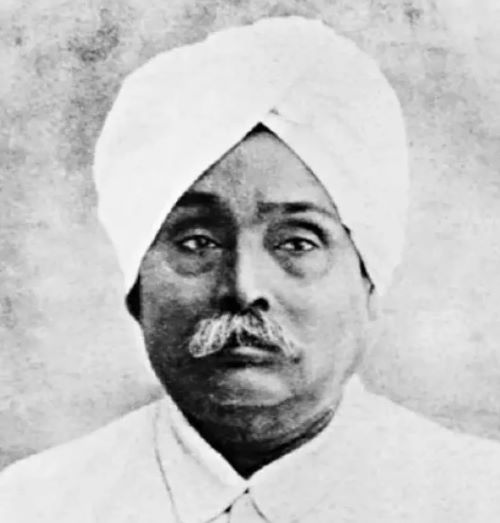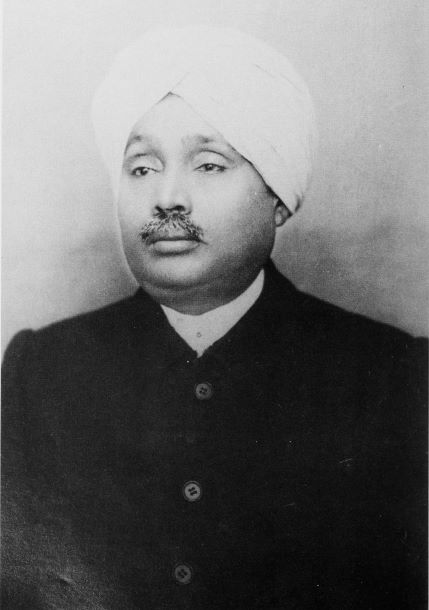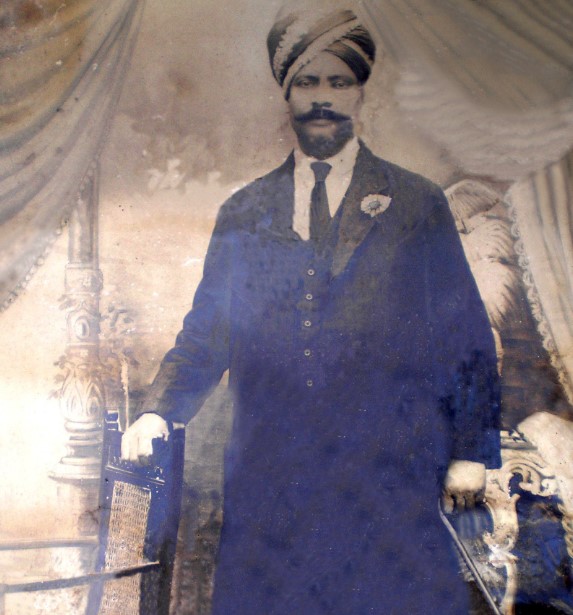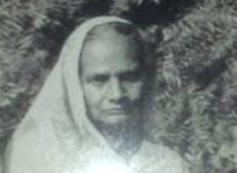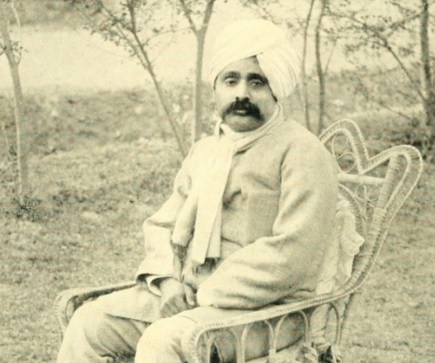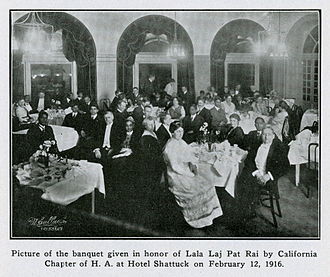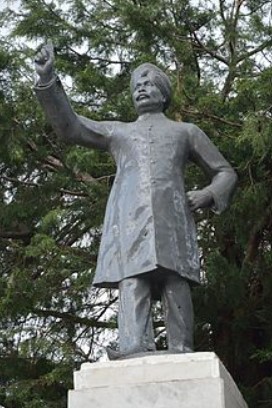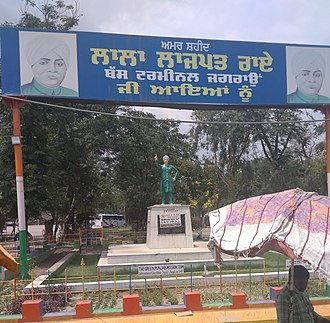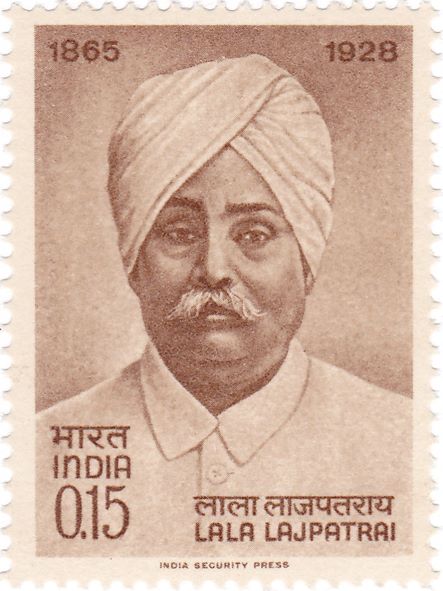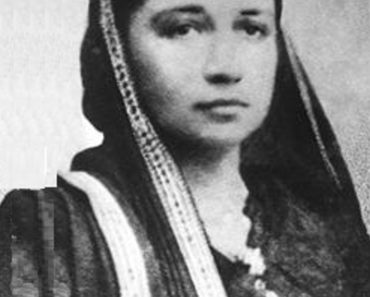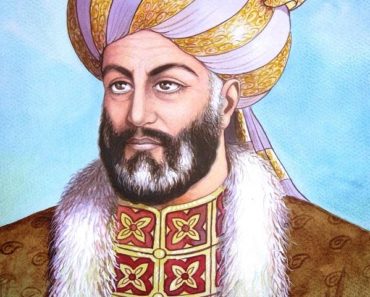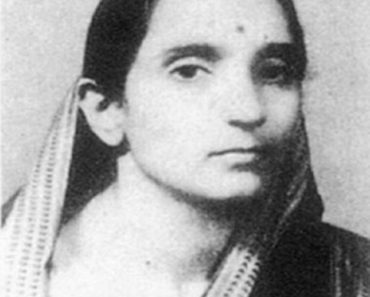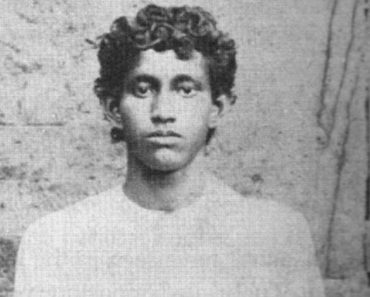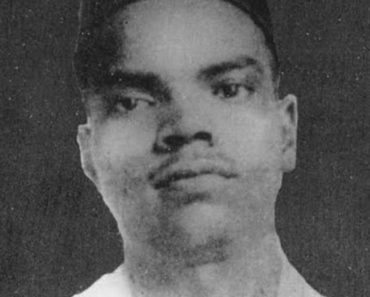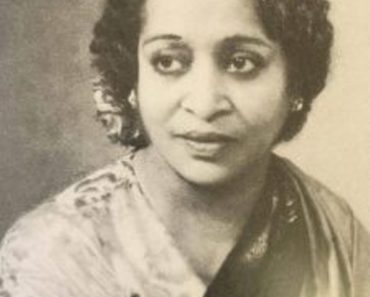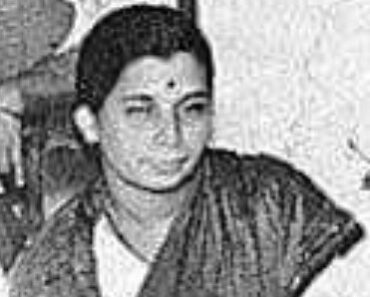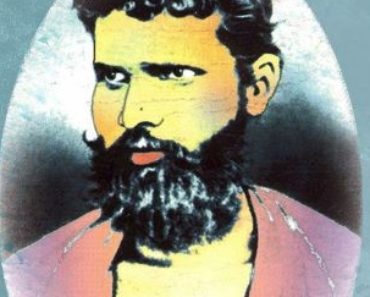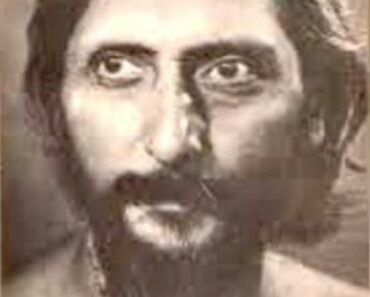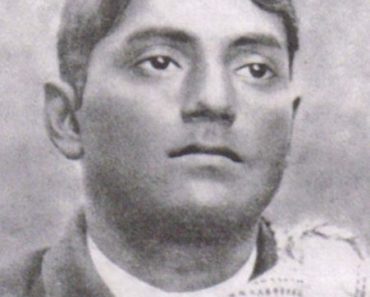Lala Lajpat Rai was an Indian independence activist and a renowned author and politician. He is popularly known as Punjab Kesari or the Lion of Punjab, who played a crucial role in India’s struggle for independence. Lala Lajpat Rai, Bal Gangadhar Tilak, and Bipin Chandra Pal formed a popular triumvirate called Lal Bal Pal during India’s struggle for independence. The Punjab National Bank and Lakshmi Insurance Company were founded under the leadership of Lala Lajpat Rai in 1894. In 1928, during a peaceful protest, which was led by Lala Lajpat Rai against the Simon Commission, the British government brutally lathi-charged the protesters and Rai following which Lala Lajpat Rai sustained severe injuries that led to his death after a few weeks.
Contents
Wiki/Biography
Lala Lajpat Rai was born on Saturday, 28 January 1865 (age 63 years; at the time of death) in Dhudike, Ludhiana district, Punjab, British India (present-day Punjab, India). His zodiac sign was Aquarius. Lala Lajpat Rai received his school education at Government Higher Secondary School, Rewari, Punjab province. In 1880, he pursued Law at Government College University Lahore (GCUL). [1]Jagaran News
Physical Appearance
Hair Colour: Grey
Eye Colour: Black
Family
Parents & Siblings
His father’s name is Munshi Radha Krishan Agrawal, Agrawal, who was a teacher of Urdu and Persian languages at a government school in Punjab province. His mother’s name is Gulab Devi Agarwal. He had a brother named Lala Dhanpat Rai.
Wife & Children
Lala Lajpat Rai got married to Radha Devi Agarwal in 1877.
The couple had three children, two sons named Pyarelal Agrawal and Amrit Rai Agrawal, and a daughter named Parvati Agrawal.
Caste
Lala Lajpat Rai belonged to the Agarwal Jain community. [2]Hindustan Times
Early Life
Lala Lajpat Rai was brought up in Jagraon, Ludhiana district, Punjab. At Lahore college, he met the revolutionary freedom fighters and patriots Lala Hans Raj and Pandit Guru Dutt, and he also became a member of the Arya Samaj Lahore after being influenced by the Hindu reformist movement of Swami Dayanand Saraswati. The Arya Samaj in Lahore was founded in 1877. Soon, he founded the Arya Gazette (newspaper) and started working as its editor. Later, he finished his Law studies at Lahore college, and he shifted to Rohtak with his father. In 1886, he started practising law at Hisar, where his father was transferred. During this period, the Bar Council of Hisar was founded by Lala Lajpat Rai and his companion Babu Churamani. Soon, Lala Lajpat Rai, along with Babu Churamani, who was a lawyer, three Tayal brothers (Chandu Lal Tayal, Hari Lal Tayal, and Balmokand Tayal), Dr Ramji Lal Hooda, Dr Dhani Ram, Murari Lal (Arya Samaj Pandit), Seth Chhaju Ram Jat (founder of Jat School, Hisar), and Dev Raj Sandhir, founded the Hisar district branch of the Indian National Congress and Arya Samaj.
Law
In 1892, Lala Lajpat Rai moved to Lahore and started practising law at the Lahore High Court during which he would often write articles for The Tribune newspaper. In 1914, he stopped practising law and started participating in the Indian independence movements.
Politics
In 1888 and 1889, at the annual session of the Congress at Allahabad, Lala Lajpat Rai, Babu Churamani, Lala Chhabil Das, and Seth Gauri Shankar were invited as delegates to represent Hisar. In 1886, Lala Lajpat Rai helped Mahatma Hansraj in establishing the nationalistic Dayananda Anglo-Vedic School in Lahore. The two factors ‘Arya Samaj and ‘communal representation’ had a great impact on the early freedom struggle of Lala Lajpat Rai. Later, he joined Indian politics and became a leader of the Indian National Congress in Punjab following which he participated in various political agitations against colonial rule and was once detained by the police and was sent to Mandalay. However, he was soon released. In 1907, he contested the post of party president at Surat but lost the election. Later, Lala Lajpat Rai founded an alumni group of National College Lahore. During the Calcutta Special Session in 1920, Lala Lajpat Rai was appointed as the President of the Indian National Congress of the state. In 1921, Lala Lajpat Rai founded the Servants of the People Society (non-profit welfare organisation) in Lahore. This organisation was shifted to Delhi after the independence of India, and a number of its branches were established all over India with the passage of time. Lala Lajpat Rai founded the Indian Home Rule League of America in New York during his stay in the United States from 1917 to 1920. In the United States, he met the Sikh communities in the Western Seaboard, and the Philippines workers, and also visited Tuskegee University in Alabama. During this time, he published a book titled The United States of America based on his experiences along with quoting the writings of African American intellectuals W.E.B. Du Bois and Fredrick Douglass. Lala Lajpat Rai established the Young India and Hindustan Information Services Association during his stay in the United States. In 1917, Lala Lajpat Rai filed a petition in the United States House Committee on Foreign Affairs and complained against the maladministration of Britishers in India. This 32 pages petition stated the desires of Indians for freedom from colonial rule. The international communities stood in support of this petition and demanded the independence of India. Reportedly, Lala Lajpat Rai drafted this petition in a night. The U. S. Senate discussed this petition in October 1917. It argued,
the notion of “color-caste,” suggesting sociological similarities between race in the US and caste in India.”
Non-Co-operation Movement in Punjab
During the First World War, in 1919, Lala Lajpat Rai came back to India from the United States. In 1920, he led the non-cooperation movement after presiding a special session of the Indian National Congress following which he was arrested by the British government and was kept in prison from 1921 to 1923. He then contested the Punjab legislative assembly elections soon after his release and won. In 1922, Lala Lajpat Rai opposed Mahatma Gandhi’s decision to quit the non-cooperation movement after the Chauri-Chauri incident and announced that he wanted to form his own party titled the Congress Independence Party.
Go Back Simon
In 1928, the colonial government started the Simon Commission policy in India under the leadership of Sir John Simon. Several political parties and Indians protested and campaigned against the Simon Commission as it did not include any Indian members. On 30 October 1928, in Lahore, Lala Lajpat Rai led a peaceful protest against it and raised the slogan “Simon Go Back.” The protest was attended by uncountable Indian revolutionaries while unfurling the black flags. The police superintendent in Lahore, James A. Scott, ordered a lathi charge. Lala Lajpat Rai was personally assaulted by the police following which Rai got severely injured. While addressing the crowd, Lala Lajpat Rai declared,
The Government which attacks its own innocent subjects has no claim to be called a civilized government. Bear in mind, such a government does not survive long. I declare that the blows struck at me today will be the last nails in the coffin of British rule in India.”
Movements
Lala Lajpat Rai was the pioneer of the following movements:
- The Indian Nationalist Movement
- The Indian independence movement, which was led by the Indian National Congress
- Hindu reform movement
- Arya Samaj in Punjab
His patriotic writings and activism were so influential that the young men of his generation such as Chandra Shekhar Azad and Bhagat Singh started following him. He sowed the spirit of nationalism among these young men to revolt against the colonial rule in India.
Organisations
Lala Lajpat Rai pioneered the following organisations in the early twentieth century:
- Arya Gazette at Lahore
- Hisar Congress
- Hisar Arya Samaj
- Hisar Bar Council
- National DAV Managing Committee
He founded the Lakshmi Insurance Company in the early twentieth century and started working as its president. This organisation was established in the Lakshmi Building in Karachi. In 1956, during the nationalisation of the Life Insurance business in India, Lakshmi Insurance Company merged with the Life Insurance Corporation of India.
Charitable Hospital
Gulab Devi, the mother of Lala Lajpat Rai, died of tuberculosis in 1927. On 17 July 1934, a tuberculosis hospital named the Gulab Devi Chest Hospital for women was established by Lala Lajpat Rai in Lahore in the memory of his mother. Later, the Gulab Devi Memorial Hospital started serving more than 2000 patients at a time and is considered one of the giant hospitals in Pakistan.
Literary Works
Lala Lajpat Rai used to write columns in several Hindi, Punjabi, English, and Urdu newspapers. He released the book titled ‘The Story of My Deportation’ in 1908. In 1915, he published the book ‘Arya Samaj.’ A book titled The United States of America: A Hindu’s Impression was written by him in 1916. The problem of National Education in India (1920), Unhappy India (1928), and England’s Debt to India (1917) are some of his popular books, which are based on patriotism. Lala Lajpat rai published his autobiography ‘Young India: An Interpretation and a History of the Nationalist Movement from Within’ in 1916. Later, Lala Lajpat Rai drafted the biographies of Mazzini, Garibaldi, Shivaji, and Shrikrishna. A book titled ‘The Collected Works of Lala Lajpat Rai’ was released by B.R. Nanda, an Indian author.
Death
Lala Lajpat Rai died on 17 November 1928, a few weeks after the lathi charge incident. His injuries were severe and the doctors declared that Lala Lajpat Rai died due to the lathi charge orders of James Scott. Soon after the death of Lala Lajpat Rai, his death issue was raised in the British Parliament. However, the British government, in its verdict, denied any role in Lala Lajpat Rai’s death. The HSRA revolutionary freedom fighter, Bhagat Singh, swore to assassinate James Scott to take revenge for Lala’s death. Soon, Bhagat Singh, Shivaram Rajguru, Sukhdev Thapar, and Chandra Shekhar Azad planned to kill James Scott. On 17 December 1928, they shot John P. Saunders by mistake when Saunders was leaving the District Police Headquarters in Lahore. John P. Saunders was an assistant superintendent of police at Lahore. After killing Saunders, Azad, in a cover fire, injured Chanan Singh, a police head constable who was chasing the shooters. Later, Bhagat Singh and his companions were detained and charged for killing John P. Saunders.
Facts/Trivia
- He also goes by the name Punjab Kesari. [3]Hindi Bhaskar
- Apart from being a noted leader, Lala Lajpat Rai was an acclaimed writer. In one of his writings, he urged that those who belonged to lower caste should be allowed to read Vedas and recite its mantras. He added the situation of the caste system and the position of women in India. He wrote,
Hindu society needs to fight its own battle with the caste system, the position of women and untouchability.”
- In 1919, soon after the Jallianwala Bagh massacre in Punjab, Lala Lajpat Rai led several protests against colonial rule.
- During the Indian independence movements, Lala Lajpat Rai was considered the pillar of nationalism in India.
- Lala Lajpat Rai established the first educational institution named R.K. high school, Jagraon, in his hometown in 1920.
- A statue of Lala Lajpat Rai was shifted to the central square in Shimla from Lahore after India got independence from colonial rule.
- In 1959, the Lala Lajpat Rai Trust was formed by a group of Punjabi philanthropists including R. P. Gupta and B. M. Grover from Maharashtra on his centenary birth celebration. Later, the Lala Lajpat Rai College of Commerce and Economics in Mumbai was started by this trust.
- Later, Lala Lajpat Rai Memorial Medical College was named after him in Meerut in the loving memory of Lala Lajpat Rai.
- The Lala Lajpat Rai University of Veterinary & Animal Sciences in Hisar, Lajpat Nagar and Lala Lajpat Rai square with his statue in Hisar, Lajpat Nagar and Lajpat Nagar Central Market (New Delhi), Lala Lajpat Rai memorial park in Lajpat Nagar (Delhi), Lajpat Rai Market in Chandani Chowk (Delhi), Lala Lajpat Rai Hall of Residence at Indian Institutes of Technology (IIT) in Kharagpur, Lala Lajpat Rai Hospital in Kanpur are some educational institutions, charitable organisations, roads, and locations which were named after Lala Lajpat Rai by the Government of India.
- Lala Lajpat Rai Institute of Engineering and Technology was established after his name in 1998 in Moga.
- After his death, several films based on the struggles of Lala Lajpat Rai for the independence of India were made to honour and remember him. An Indian silent film titled Punjab Kesari (or The Lion of Punjab) was released in 1929 and was directed by Homi Master. Another film titled Vande Mataram Ashram was released in 1927 and was directed by Bhalji Pendharkar. This movie portrayed the characters Lala Lajpat Rai and Madan Mohan. The release of this film was banned by the British government as it depicted the abolition of the western education system in India by Lala Lajpat Rai and Madan Mohan. Later, a documentary film was released that portrayed Lala Lajpat Rai’s life journey. This film was directed by K. Viswanath and produced by the Indian Government Films Division.
- The death day of Lala Lajpat Rai is celebrated as Martyrs’ Day in Odisha every year.
- In 1965, a fifteen paise stamp was issued by the postal department of India to honour the sacrifices of Lala Lajpat Rai during India’s struggle for independence.
- Lala Lajpat Rai used to read revolutionary and patriotic books. He was the follower of an Italian revolutionary leader named Giuseppe Mazzini, who was a noted author for his patriotic and nationalistic writings.
- Throughout his life, Lala Lajpat Rai always tried to unite the Hindus and Muslims of India through his writings.
I do honestly and sincerely believe in the necessity or desirability of Hindu-Muslim unity. I am also fully prepared to trust the Muslim leaders. But what about the injunctions of the Koran and Hadis? The leaders cannot over-ride them. Are we then doomed? I hope not. I hope your learned mind and wise head will find some way out of this difficulty.” – Lala Lajpat Rai
References
| ↑1 | Jagaran News |
|---|---|
| ↑2 | Hindustan Times |
| ↑3 | Hindi Bhaskar |

